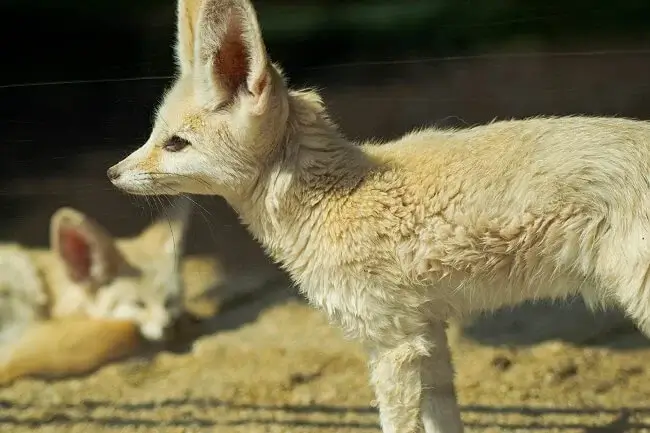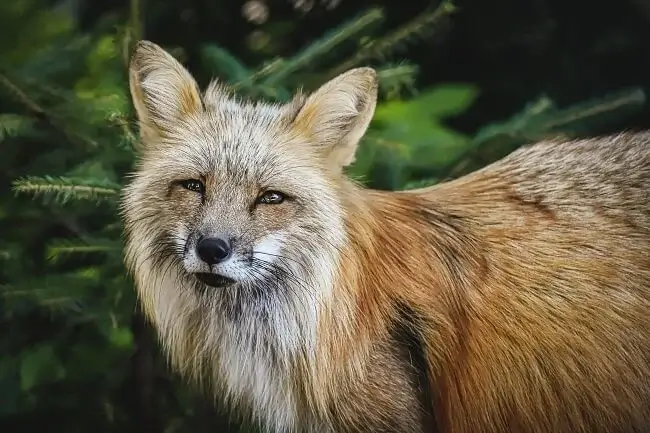Foxes are ubiquitous canine mammals found worldwide. When we see these bushy tailed creatures darting through backyards or across country roads, it raises the question – how long do foxes live? What is the life expectancy of a fox in the wild compared to captivity? In this article, I’ll dive into details around fox lifespan covering how long they live in different environments, their life cycle stages, and how to extend your pet fox’s life.
Fox Lifespan in the Wild:
How long do foxes live? Fox lifespan on average lasts around 2-3 years without human care due to threats like predators, disease, and lack of food.
Therefore, the average life expectancy of a fox in the wilderness is extremely short. The red fox, the most common species worldwide, has a lifespan of just 18 months to 3 years in natural environments. Arctic foxes tend to live around 3 to 6 years. Island foxes, who face limited predation, can live up to 8 years in the wild.
Let’s look at why wild fox lifespans are so short:
- Predators: Foxes are prey for larger carnivores like wolves and eagles. So, being hunted shortens lifespan of the foxes.
- Lack of food: Foxes starve easily when food is scarce, which leads the foxes to death.
- Human activities: Wildlife-human conflicts via hunting, cars, etc and sometimes human also kill foxes.
- Disease: Foxes die from parasites and infections because they don’t have veterinary care.
Although a few foxes live up to 10 years in the wild, most survive less than 5 years as foxes don’t have any human care. Next, we’ll look at how captivity changes the equation…
Fox Lifespan in Captivity
According to reddit In captivity, foxes live much longer than the wild. With proper care, space to roam, nutrition, vet checks, and controlled environments, pet foxes can survive up to 14 years or more.
On average, domesticated foxes live 10-12 years when kept as pets. With close monitoring and preventative care, lifespan reaches into the teens. Some key factors enabling longer fox life in captivity include:
- No predators: Foxes are safe from other wildlife looking to hunt them.
- Unlimited food: Nutrition supports immune function and longevity.
- Veterinary care: Regular vaccines and medical treatment maintain health.
- Safe habitats: Enclosures protect foxes and prevent deadly conflicts with people or cars.
- Clean living conditions: Proper sanitation prevents communicable diseases.
- Exercise and enrichment: Keeping active and engaged also supports lifespan.
Additionally, pet foxes also experience steady growth and good health for the first decade of life due to diligent caretaking. Let’s look now at the different life stages a fox passes through.
Fox Life Stages
Understanding the phases of the fox’s lifespan can help us to provide better care as they mature with time.
Baby Foxes:

- Gestation lasts 49-58 days, with average litter size of 4-5 kits
- Kits are blind, deaf, and toothless at birth
- Eyes open at 8-16 days old, start eating solid food like rodents at 4 weeks
- Kits remain in den for 5-6 weeks before venturing out
- Require regurgitated food from parents until able to hunt mice/voles alone
Juvenile Foxes:

- Rapid growth from 6 weeks to 6 months
- Leave parents at 6-7 months to establish own territories
- Hunt small rodents, birds, fruit while honing skills
- Reach reproductive maturity at 9-10 months old
- Disperse up to 100+ miles away from birth place
Adult Foxes:

- From 1-5 years old
- Establish lifelong mates and have offspring
- Hunt rabbits, hares, small deer alone rather than in packs
- Patrol large home territories up to 50 sq km
- Feed on mice, birds, insects, fruit, eggs, etc.
Old Foxes:

- Over 5 years old
- Age-related decline in senses, mobility, and immunity
- Often die from disease or hunger as hunting skills diminish
- Increasingly consume scavenged carrion and human trash
Understanding fox life cycles allows us to better support their health and extend lifespan. Next, I’ll go over some ways to increase your pet fox’s longevity.
It is also a debate about fox lifespan and fox life cycle difference terms and how we can elaborate. Let’s have a close look at the following comparison of fox life cycle and fox life span:
| Life cycle | Life span |
| A fox’s life cycle refers to the different stages of development and growth a fox goes through during its life. The main stages of the fox life cycle are Gestation, Cubhood, Adolescence, Adulthood, and Old Age. | A fox’s life span refers to the average total number of years a fox lives. The typical life span of a fox in the wild is 2 to 5 years. Foxes living in captivity may live up to 14 years. The life span of foxes also depends on their species. Different species of foxes have different life span. |
Ways to Extend Your Fox’s Life:
As per my experience and depth research, maximizing fox lifespan requires diligent care and prevention from the pet fox owners. Here are some top tips:
- Provide proper nutrition – Feed high quality foods designed for foxes to avoid obesity or malnutrition. Avoid too many table scraps.
- Stimulate their mind – Rotate toys, use puzzle feeders, change routines to prevent boredom and cognitive decline.
- Ensure adequate exercise – Let foxes run daily indoors or outdoors to stay fit. Active foxes live longer.
- Administer preventative medicine – Annual vet exams, heartworm medication, flea/tick control boost immunity.
- Vaccinate against disease – Core vaccines prevent contagious and often fatal illnesses.
- Groom frequently – Help foxes maintain healthy coat, skin, ears, teeth, nails.
- Sterilize pets – Spay/neuter foxes to avoid complications of breeding.
- Provide enriched habitats – Enclosures should have space, hiding spots, perches to encourage natural behaviors
With attentive care, your fox can lead an enriched, active life reaching 10+ years. You just need to work closely with your exotic veterinarian for optimal preventative care of your pet foxes.
Fox Behavior Changes with Age:
Like all animals, foxes exhibit age-related behavior changes with passage of time. So, understanding these changes helps owners to provide better care.
Additionally, because young foxes under 3 years old are very active and playful, I would suggest you to Provide ample toys and exercise to helps them thrive naturally.
Adult foxes from 3-5 years old are more cautious and focused hunters. They (Adult foxes) enjoy puzzles, digging, and patrolling territory.
On the other hand, old foxes over 5 years sleep more, play less, and face difficulty to hunt effectively. Therefore, Owners should provide soft bedding and easily consumed foods to keep them active and nurture further.
Other Age-Related Changes in Foxes Include:
- Decreased vision, hearing, sense of smell
- Less grooming and coat cleanliness
- More sleeping, less active time
- Difficulty jumping onto ledges
- Messier eating habits
- Occasional house soiling accidents
I strongly recommend you to monitor your fox closely for these shifts. Also, report any concerns to your exotic veterinarian to ensure your senior fox lives happily.
Conclusion:
In captivity, with attentive care, foxes can survive over a decade, unlike the wild. Providing proper nutrition, enrichment, exercise, veterinary treatment, and TLC, allows fox owners to nurture a lasting relationship with their pet foxes. If I want to extend the lifespan of my pet fox, providing proper care is key. Monitor your fox closely as they age, adapting their environment to their needs and your clever fox companion can thrive into old age.

